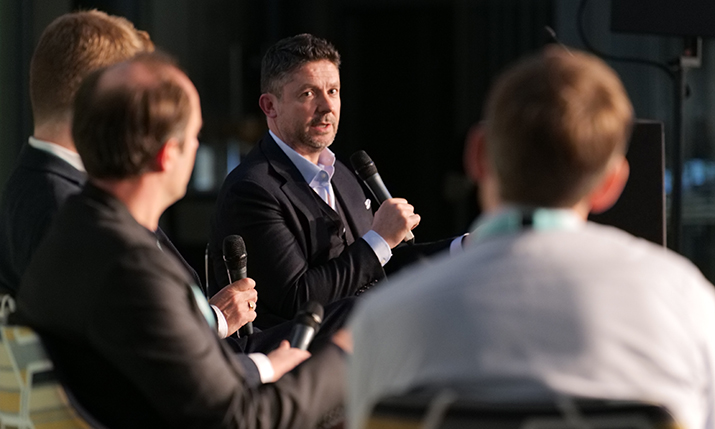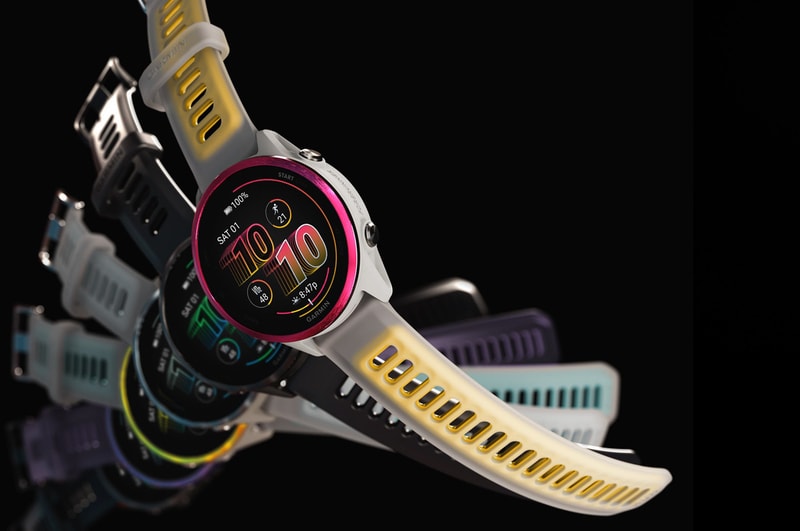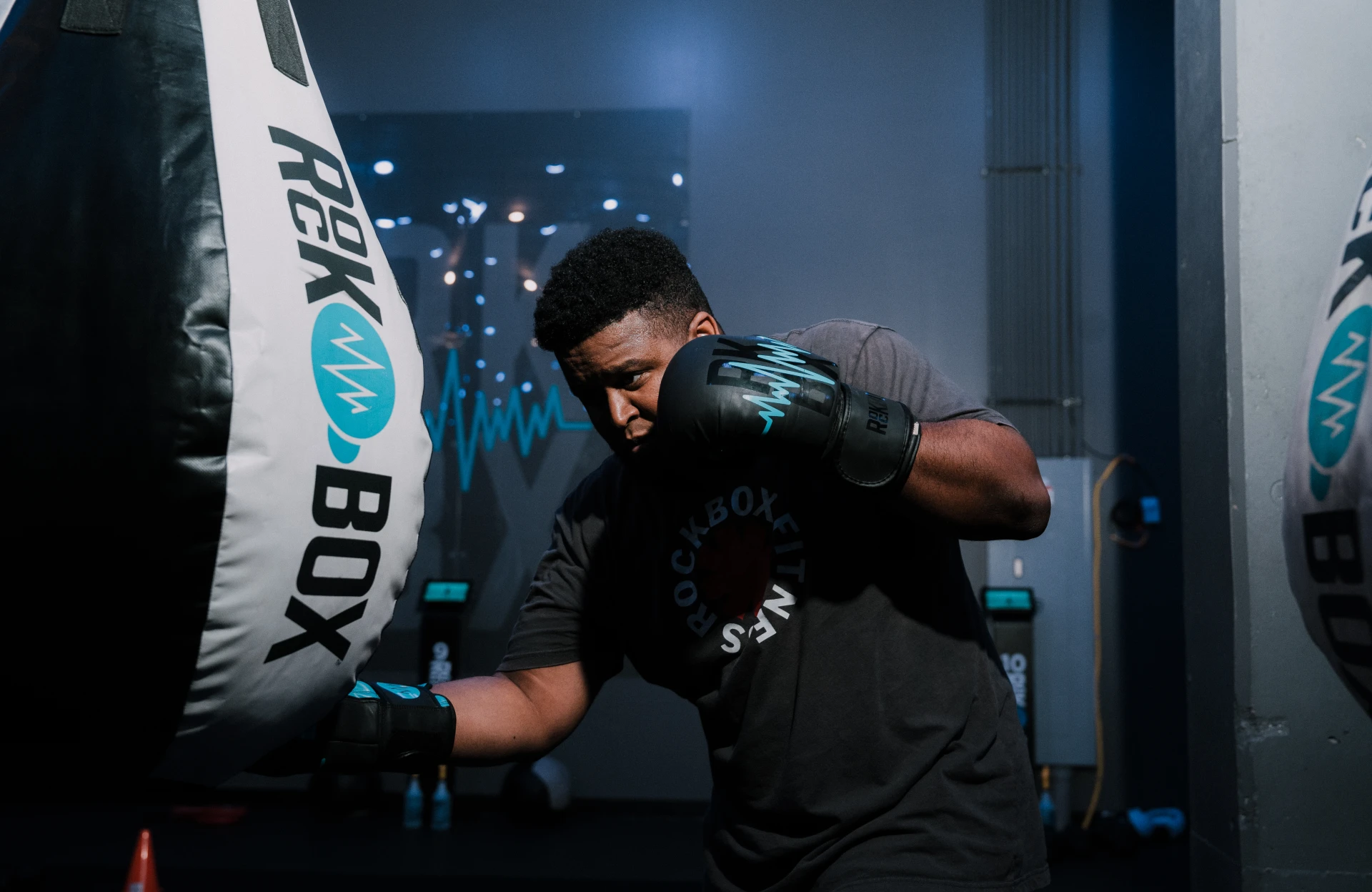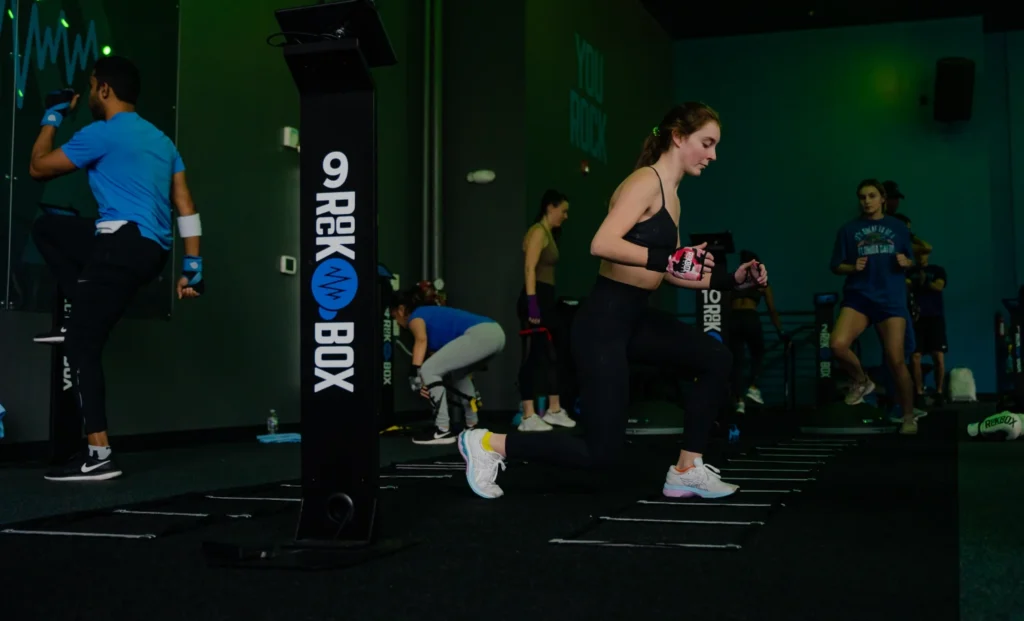

VitalOS, powered by MicroEJ’s VEE Wear, enables an evolving app ecosystem, empowers brand differentiation, delivers premium experiences, and triples smartwatch battery life Vitalist and MicroEJ Join Forces to Revolutionize Wearable Technology Get the latest news delivered to your inbox Sign up for The Manila Times newsletters By signing up with an email address, I acknowledge […]



VitalOS, powered by MicroEJ’s VEE Wear, enables an evolving app ecosystem, empowers brand differentiation, delivers premium experiences, and triples smartwatch battery life
Vitalist and MicroEJ Join Forces to Revolutionize Wearable Technology
BOSTON and CALGARY, Alberta, May 15, 2025 (GLOBE NEWSWIRE) — Vitalist Inc., the innovative company behind the successful Moto Watch collection and the engineering expertise that drove millions of connected devices worldwide (TSXV: VITA) (“Vitalist”), and MicroEJ Inc. (“MicroEJ”), a leader in software solutions for IoT and embedded devices, collectively the “Companies”, announce that Vitalist has selected MicroEJ’s VEE Wear solution to power VitalOS, its smartwatch operating system expected to be launched in the second half of 2025. This partnership enhances Vitalist’s smartwatch offerings by expanding features, extending battery life, fostering an app ecosystem, and enabling brands to create fashion-tech wearables with unique identities.
VitalOS: Leading Open App-Based Wearable Platform
VitalOS is Vitalist’s newest smartwatch operating system engineered to deliver unrivaled battery life with a user-centric design. The strategic vision is to establish it as the premier open platform for wearables by welcoming third-party development, enabling external brands and independent developers to create innovative applications. We expect this approach to foster a vibrant ecosystem that drives widespread adoption, positioning VitalOS as the future of connected living.
VEE Wear: Powering Smartwatch Innovation with Extended Battery Life
VEE Wear is a lightweight, ultra-efficient wearable framework that enables premium smartwatch features on cost-effective, ultra-low-power hardware. By building VitalOS on VEE Wear, Vitalist delivers longer battery life, customizable user experiences, and rapid product design capabilities to help brands craft distinctive smartwatch offerings. Through MicroEJ’s partnership with Facer, users will gain access to the world’s most extensive catalog of watch faces, featuring iconic brands and top independent designers.
“With VEE Wear, we set out to bring the Facer experience to every smartwatch user-offering unparalleled access to thousands of stunning watch faces from the most recognized brands and talented independent designers worldwide,” said Ariel Vardi, CEO of Facer. “VitalOS brings this vision to life, delivering a premium smartwatch OS that enhances personalization and allows users to express their unique style like never before.”
This partnership gives Vitalist and its users full control over smartwatch design, moving beyond fixed, commoditized ODM products. With VEE Wear’s containerized app architecture, Vitalist is building a creator-driven ecosystem, ensuring that VitalOS-powered devices continuously evolve with new apps, features, and third-party integrations.
“Our partnership with MicroEJ is a key step in delivering high-quality, accessible health and fitness devices,” said Kalvie Legat, CEO of Vitalist. “With VEE Wear powering VitalOS, we’re offering a superior user experience-expanding functionality, extending battery life to up to 10 days, and enabling ongoing feature enhancements. This supports our vision of making intelligent, feature-rich wearables accessible to all.”
A Strategic Milestone in Vitalist’s Transformation
This collaboration is a major milestone in Vitalist’s shift towards making more adaptive, intelligent wearable technologies. VitalOS paves the way for affordable smartwatches that rival premium models, continuously evolving through software updates, third-party apps, and cloud-driven services.
“Vitalist holds a unique position in the market as the company enabling consumer brands to create distinctive wearable products that elevate brand image and deliver an exceptional user experience,” said Dr. Fred Rivard, CEO of MicroEJ. “Consumers demand longer battery life, richer features, and the ability to personalize their devices. With VitalOS powered by VEE Wear, Vitalist meets these expectations-while also enabling a blazing-fast development process that empowers brands to rapidly create a range of health devices tailored to every user.”
Availability
VitalOS is set to launch in the second half of 2025. Sign up at www.vitalist.co for exclusive updates.
About MicroEJ
MicroEJ is a global leader in software solutions for intelligent devices, trusted by industry leaders in consumer electronics, energy, healthcare, and industrial automation. With over 300 million units of MICROEJ VEE sold worldwide, MicroEJ empowers manufacturers to turn standard products into smart, cloud-connected, AI-enabled devices, enabling rapid, complexity-free innovation. By bridging IT and embedded systems, MicroEJ drives scalable transformation that helps industries innovate faster, adapt to market needs, and build a software-driven future for IoT and connected devices.
▷ For more information: Press Kit – Press Room – www.microej.com – LinkedIn
About Vitalist
Vitalist is an innovative technology provider that helps brands build better products. Through VitalOS, brands create seamlessly connected devices and applications that adapt to each user. By uniting hardware and software with intelligent analytics, we’re building an ecosystem of personalized solutions that enhance human potential.
▷ For more information: www.vitalist.co – LinkedIn
Neither the TSX Venture Exchange nor its Regulation Services Provider (as that term is defined in the policies of the TSX Venture Exchange) accepts responsibility for the adequacy or accuracy of this release.
Forward-Looking Information
This press release contains forward-looking information within the meaning of applicable securities laws. In general, forward-looking information refers to disclosure about future conditions, courses of action, and events. The use of any of the words “anticipates”, “believes”, “expects”, “intends”, “plans”, “will”, “would”, and similar expressions are intended to identify forward-looking information. More particularly and without limitation, this press release includes forward-looking information with respect to the launch of the VitalistOS operating system and key features including battery life.
Although MicroEJ and Vitalist believe that the expectations and assumptions on which such forward-looking information is based are reasonable, undue reliance should not be placed on the forward-looking information because the Companies cannot give any assurance that it will prove to be accurate. By its nature, forward-looking information is subject to various risks and uncertainties, which could cause the actual results and expectations to differ materially from the anticipated results or expectations expressed in this press release. A detailed description of risk factors that may cause actual results to differ materially from forward-looking information can be found in Vitalists’ most recent annual information form and management’s discussion and analysis on the SEDAR website at www.sedarplus.ca. Although Vitalist has attempted to identify in its public disclosure important factors that could cause actual results to differ materially from those contained in forward-looking information, there may be other factors that cause results not to be as anticipated, estimated or intended. Readers are cautioned that the risk factors in its public disclosure may not be exhaustive. Readers are further cautioned not to place undue reliance on forward-looking information as there can be no assurance that the plans, intentions or expectations upon which they are placed will occur. Forward-looking information contained in this press release is expressly qualified by this cautionary statement. The forward-looking information contained in this press release represents the expectations of Vitalist as of the date of this press release and, accordingly, is subject to change after such date. However, Vitalist expressly disclaims any intention or obligation to update or revise any forward-looking information, whether as a result of new information, future events or otherwise, except as expressly required by applicable securities law.
Press contacts:
MicroEJ
Elsa Hervio, [email protected]
Vitalist
Kalvie Legat, [email protected]
A photo accompanying this announcement is available at https://www.globenewswire.com/NewsRoom/AttachmentNg/a52370a6-ee03-4237-882a-538f2895e6d5

Illicit streaming is the biggest financial threat ever faced by the sports media industry, according to Barney Francis, executive vice president of Studios at IMG, who has called for greater industry cooperation to tackle piracy. Speaking in response to findings in a new research report by Enders Analysis, Francis called for collective action across the […]

Illicit streaming is the biggest financial threat ever faced by the sports media industry, according to Barney Francis, executive vice president of Studios at IMG, who has called for greater industry cooperation to tackle piracy.
Speaking in response to findings in a new research report by Enders Analysis, Francis called for collective action across the sector and cited the French sports market as a cautionary example, pointing to issues with piracy affecting Ligue 1 and DAZN.
The Enders Analysis research accuses Amazon, Google, Meta and Microsoft of “ambivalence and inertia” and said the issue is damaging broadcasters’ revenue and puts users at risk of cyber-crime.

IMG’s Barney Francis speaking at SVG Europe’s Football Summit
The Enders report also cited “continued depreciation” of digital rights management (DRM) tools from the likes of Google and Microsoft as a factor in aiding illicit streaming, with a lack of maintenance of the tech firms’ DRM systems blamed for “compromised” security levels.
The Amazon Fire Stick was also highlighted by the authors of the Enders research as “a piracy enabler”.
Speaking to the BBC’s World Business Report programme, Francis said illicit streaming via modified Amazon Fire sticks had evolved from what was “a bit of a nudge and a wink in a pub 15 years ago” to become a more endemic problem.
“Now, it has become a cultural norm, and I worry greatly that enough isn’t being done. But it’s going to take a collective effort from the entire industry, because this is the biggest threat to its finances that we’ve ever known.
“We’ve always called it a game of Whack-a-Mole. The problem is now so big, and we can we just look across the water to France and what’s happening with Ligue 1 and DAZN there, which is the result of rampant piracy that is escalating all the time.
The French league had sold Ligue 1 domestic TV rights to DAZN for €325 million per season from 2024 to 2029. However, earlier this year DAZN withheld a payment amid claims that French football governing body LFP had not done enough to tackle piracy. DAZN has since terminated its contract after one season of Ligue 1.
“It is organised crime, as the report suggests, and [Enders’] conclusion is that the big tech companies around the world can be the only ones that can come up with the right sort of protection that’s needed going forward.”
IMG’s clients – sports federations and leagues – seek to maximise revenue from media rights, and broadcasters invest heavily to secure these, Francis explained, but piracy erodes that value, forcing price increases to cover losses from customer churn, and ultimately impacting investment in the sport itself.
“The consequence of that will be less investment into the players, athletes, performers on the field of play, which means for the fans…they’re going to see less quality players on the pitch, because a club won’t be able to afford them because of the declining revenues that come from media,” said Francis.
When asked whether direct-to-consumer streaming may offer a solution, Francis acknowledged that leagues can pursue this route but warned of the trade-offs. Using the Premier League as an example, he said that guaranteed multi-year media revenues provide financial certainty for clubs. “When you go direct to the consumer, you start to put into jeopardy guarantees of your revenue,” he said.
Francis is not the first industry leader to call for greater action from major technology companies. La Liga president Javier Tebas has long called for action to combat piracy from the likes of Google and Cloudflare, recently describing the latter as an “accomplice in the widespread theft of intellectual property” from the Spanish football league.
And in a BBC article about the Enders report, Nick Herm, chief operating officer of Sky Group, said “we’d like to see faster, more joined-up action from major tech platforms and government to address the problem and help protect the UK creative industries.”
JOHN STOSSEL Why does Uber make videos where people say, “I’m non-binary or genderqueer”? And why does Lockheed Martin fund floats at Pride parades? Because companies want to raise their score on the Human Rights Campaign’s “Corporate Equality Index.” Equality is a good thing. I support human rights. But the Human Rights Campaign? That’s something […]


JOHN STOSSEL
Why does Uber make videos where people say, “I’m non-binary or genderqueer”?
And why does Lockheed Martin fund floats at Pride parades?
Because companies want to raise their score on the Human Rights Campaign’s “Corporate Equality Index.”
Equality is a good thing. I support human rights. But the Human Rights Campaign? That’s something else.
“They have nothing to do with actual human rights,” says Robby Starbuck in my new video. “They’re an LGBTQ+ advocacy organization that pushes topics about transgenderism into the workplace.”
Starbuck uses his social media following to criticize the many companies that partner with the Human Rights Campaign.
The Campaign “does great harm,” he says, because companies that want a high score must do things like pay for trans employees’ gender reassignment surgery and fund puberty blockers for employees’ kids.
I push back, “I know people who’ve had the surgery and they seem happier!”
“If you’re an adult and you make a set of decisions I disagree with, that’s your prerogative,” replies Starbuck. “I don’t want to give my money to a company that’s going to use it to fund any sex changes of any child.”
People can debate the age when you’re considered competent to medically change your gender. What surprises me is how many companies suck up to the Human Rights Campaign by paying for it.
Google even brags about providing a “trans liaison” to help people transition.
Even some of your Amtrak tax subsidy goes to pay for this stuff. Amtrak’s “Lead Environmental Specialist” touts “education on personal pronouns.”
To raise their Corporate Equality Index scores, companies are encouraged to donate to LGBTQ+ groups — like the Human Rights Campaign! That helps the Campaign collect $42 million in tax-free money.
The more I looked at the organization, the less it seems to be about human rights, and the more it seems to be about left-wing advocacy.
Its homepage features protesters holding signs saying, “I will aid and abet abortion.”
When I point that out to Starbuck, he says, “Yeah, which humans? Which rights? Apparently, if you’re a small enough human, you don’t have rights.”
The Campaign’s president says its Corporate Equality Index is “about partnership with businesses to make workplaces as inclusive as possible for LGBTQ+ people.”
But today, most businesses are inclusive, and in America, LGBT people are more accepted than ever. Twenty years ago, 37% of Americans supported gay marriage. Forty-five percent said gay relationships are moral. Today, support for gay marriage is at 69% and 64% consider gay relationships moral.
Yet, as life gets better for LGBT people, the Human Rights Campaign declared a “national state of emergency for LGBTQ+ Americans!”
“This is a crisis right now!” said HRC president Kelley Robinson.
I think I know why she said that. If activists acknowledge that Americans have come to accept LGBT people, the Campaign might go out of business. One HRC executive says “we are never going to reach a destination.”
Of course not. There’s money to be made and leftist propaganda that needs spreading.
Starbuck, by pointing out what the HRC really does, has persuaded some companies to stop sucking up.
Ford, Harley-Davidson, Lowe’s, Molson Coors, Toyota, Tractor Supply, Walmart and others announced that they will no longer participate in the Index.
“We came along and told people the story and the backtracking began,” says Starbuck.
The Campaign’s president says, “What we’re seeing from these companies is short-sighted.”
Maybe.
Businesses can join whatever lists they want, but they ought to do what’s good for their business. That means listening to customers, not progressive activists.
“At the end of the day,” says Starbuck, “that’s all people want, is for businesses to do their business. Not to virtue signal … or to perpetuate a political ideology.”
———
John Stossel posts a new video every Tuesday at JohnStossel.com.
State AlabamaAlaskaArizonaArkansasCaliforniaColoradoConnecticutDelawareFloridaGeorgiaHawaiiIdahoIllinoisIndianaIowaKansasKentuckyLouisianaMaineMarylandMassachusettsMichiganMinnesotaMississippiMissouriMontanaNebraskaNevadaNew HampshireNew JerseyNew MexicoNew YorkNorth CarolinaNorth DakotaOhioOklahomaOregonPennsylvaniaRhode IslandSouth CarolinaSouth DakotaTennesseeTexasUtahVermontVirginiaWashingtonWashington D.C.West VirginiaWisconsinWyomingPuerto RicoUS Virgin IslandsArmed Forces AmericasArmed Forces PacificArmed Forces EuropeNorthern Mariana IslandsMarshall IslandsAmerican SamoaFederated States of MicronesiaGuamPalauAlberta, CanadaBritish Columbia, CanadaManitoba, CanadaNew Brunswick, CanadaNewfoundland, CanadaNova Scotia, CanadaNorthwest Territories, CanadaNunavut, CanadaOntario, CanadaPrince Edward Island, CanadaQuebec, CanadaSaskatchewan, CanadaYukon Territory, Canada Zip Code Country United States of […]
SAN JOSE — Life Time, a company that describes itself as an “athletic country club,” has signed a lease for a site occupied by Best Buy at Santana Row in San Jose, saying it hopes to open more Bay Area locations. Life Time leased a building at the southeast corner of Stevens Creek Boulevard and […]

SAN JOSE — Life Time, a company that describes itself as an “athletic country club,” has signed a lease for a site occupied by Best Buy at Santana Row in San Jose, saying it hopes to open more Bay Area locations.
Life Time leased a building at the southeast corner of Stevens Creek Boulevard and South Winchester Boulevard for its fitness- and health-oriented country club, according to documents filed on May 28 with the Santa Clara County Recorder’s Office.
“Santana Row is a great location,” said Meghan Akradi, a vice president of real estate with Life Time. “It’s hard to do better than Santana Row in terms of iconic properties.”
The building at 3090 Stevens Creek Blvd. is 60,000 square feet and is two stories, according to commercial real estate database Property Shark. The initial term of the lease is 15 years, Santa Clara County property documents show.
“This is a market where we’ve wanted to be for many years,” Akradi said. “We hope to open our San Jose location during the first half of 2027. It depends on how quickly we can get permits.”
The only Bay Area location for Life Time currently is in downtown Walnut Creek at 1315 Broadway Plaza.
The future San Jose location is expected to feature an array of amenities, according to Life Time.
“We will have great fitness areas, fitness studios, personal training sites, yoga, pilates, cafe, work lounges, a sauna, and hot tubs,” Akradi said. “We will have a kids’ academy.”
Minnesota-based Life Time takes a different approach to fitness than is the case with typical health clubs in the country, according to company executives.
“Members are calling us a country club without the golf,” said Natalie Bushaw, a spokesperson for Life Time.
In March, Fast Company placed Life Time at No. 23 on its list of the 50 most innovative companies of 2025.
“It goes much further than a typical gym,” Bushaw said. “Life Time takes a holistic approach to health, wellness, recovery and fitness. People can literally spend all day at Life Time, and they do.”
Life Time operates at least 175 athletic country clubs that have an average size of 100,000 square feet, according to the company’s website.
“It’s like a Four Seasons resort every time you walk into one of our country clubs,” Akradi said.
The company has 1.4 million members and 41,000 employees. Life Time also has at least 150 kids’ academy locations.
Life Time executives believe the company’s approach can capitalize on post-pandemic attitudes to staying healthy.
“Our company has come back stronger than ever,” Akradi said. “We are exceeding our pre-COVID member engagement, member satisfaction and member attention.”
Over the one-year period that ended in March, Life Time posted a profit of $207.5 million, an increase of 182.3%, or nearly triple the profits over the similar 12-month period the year before.
Revenue over the year-long period ending in March totaled $2.73 billion, an increase of 18.6% from the same period the prior year, according to Finance Charts.
“People are clearly emphasizing their health and wellness,” Akradi said. “We feel well positioned to continue to serve those people.”
Originally Published:
Garmin has been in the space of digital fitness watches for some time now and it has just launched two new models including the Forerunner 970. The Forerunner 970 kicks off the launch with a titanium body construction. It comes in the tonal options of gray, white and silver, or a soft gold color. However, […]

However, the colors are turned up a notch at the bands with a sportier touch of white and yellow on the white model. The soft old is detailed with gray and indigo on the band, and it all elevates the aesthetic with a dash of color. Details of the watch include its standard tracking along with the new Triathlon Coach feature.
Image Credit: Garmin
How the franchise built for growth from day one — and made a critical tech pivot to help accelerate it When Roger Martin set out to build RockBox Fitness, he didn’t envision a single flagship studio with local buzz. He saw a national franchise brand — and he built accordingly. “RockBox Fitness was built from […]

When Roger Martin set out to build RockBox Fitness, he didn’t envision a single flagship studio with local buzz. He saw a national franchise brand — and he built accordingly.
“RockBox Fitness was built from inception to be a national franchise,” said Martin, founder and CEO. “We set out with the intent to build a concept that was scalable, repeatable, and had a market fit. Our first hires, before the flagship store was built, were two marketing consultants, a web designer, and an advisory board. We wanted to get the look, feel, layout, branding — everything — perfect right out of the gate.”
It was a bold move. But the early investment paid off, allowing the brand to grow deliberately, refining systems and testing market fit before offering franchise opportunities. Still, scaling a fitness franchise is hardly linear. The brand’s high-energy model and marketing-forward foundation attracted interest across regions — but behind the scenes, Martin was dealing with mounting complexity.
Manual royalty tracking, fragmented systems and inconsistent digital experiences began to threaten the very thing RockBox was known for: delivering a consistent, standout member journey across every location.
That’s when Martin made the call to migrate to a new business management platform — a move many franchisors avoid mid-growth. For RockBox, however, the risk of standing still was greater.

“The risk of not making the move meant we would be operating suboptimally with our marketing efforts, our digital customer experience, and our ability to easily integrate additional tools, like our lead nurture software, ThriveMore Autopilot,” said Martin.
His choice: Xplor Mariana Tek, a platform known for helping boutique fitness brands streamline operations and drive franchise performance. But it wasn’t just about features; it was about strategic alignment.
Martin had a clear vision of what RockBox needed to scale: control, consistency and clarity. And as more locations came online, automation wasn’t just helpful — it became critical.
“The marketing suite and automations are outstanding and the fact a franchisor can push emails and texts down through the system is outstanding,” he said. “This gives the franchisor more control and honestly, makes it easier for the franchisee.”

One of the most impactful outcomes of the shift has been RockBox’s use of Mariana Tek’s Franchise Fee Portal — a tool that eliminates manual royalty calculations by tying them directly to transaction data.
“This was a mandatory feature for us,” Martin explained. “Transaction-level royalty pull is critical to operating at scale. One, the franchisor always gets paid and doesn’t have to chase the franchisee for funds. Two, the franchisee benefits because they can plan their cash flow based off what hits their bank account. Nothing is ever taken out of their account after the remit is deposited because the royalties and brand fund fees have already been removed.”
According to Stephanie Parks, Product Manager at Mariana Tek, the portal replaces “fragmented, manual processes prone to delays and human error” with real-time automation and transparency. “Both franchisors and franchisees can log into the same dashboard, see the exact breakdown of what’s owed and why, and drill into reports by fee type, location, or time period. The result is a smoother franchise relationship built on trust, accuracy and efficiency.”
Of course, even the best tech can backfire without proper onboarding — something Martin had experienced firsthand with past systems. But the migration to Mariana Tek turned out to be one of the smoothest transitions in RockBox’s operational history.
“It comes down to the Mariana Tek team,” Martin said. “They have been hands-on with us the entire time and are always professional, informed and fast. The software is outstanding, but the people are who make the transition easy and seamless.”
That “white-glove” experience is by design, according to Lauren Everett, Senior Director of Customer Onboarding at Mariana Tek. “We take the time to deeply understand each client’s unique business. Our onboarding isn’t about rushing clients through — it’s about tailoring the system to match their operations and goals.”

While financial infrastructure is a vital piece of the puzzle, Martin emphasizes that brand growth hinges on more than numbers. For RockBox, every aspect of the member journey — from digital booking to the in-studio experience — had to be replicable, even in markets where ownership styles and staffing levels varied.
“The customer experience from the moment they book to when a prospect first walks in the door, the class experience and the sales presentation after is all standardized,” Martin said. “However, with staff turnover at the studio level and owners who are not as involved, it is an ongoing project to ensure all locations are providing the exact same, top-notch experience that makes RockBox Fitness so unique and special.”
Parks credits the RockBox team with treating technology as more than a back-office utility. “From day one, their leadership team has approached technology not as a back-office afterthought, but as a strategic lever for expansion and differentiation,” she said. “RockBox doesn’t just want tools that work — they want tools that evolve. Their team was quick to recognize the power of real-time financial automation and the operational lift it can provide. That kind of forward-thinking approach is why they’ve been such a valuable pilot partner for the Franchise Fee Portal’s newest capabilities.”
RockBox’s evolution hasn’t been without growing pains. Early on, Martin learned that what works in one location doesn’t always scale cleanly — especially when people are involved.
“The lesson was that a higher ticket package ($2,500+) required a highly skilled salesperson, and that was challenging to replicate on a national scale,” he shared. “Most people in fitness don’t like to actually sell. That is not why they got into the field, yet it is a critical skill to grow a fitness business.”
Franchisee selection, too, required careful calibration. “We look for past records of achievement, a willingness to roll up their sleeves and do the work, a penchant for learning, and a strong bias for action,” Martin said. “If any of those four areas are weak or missing, we take a pause and either ask deeper questions or we pass on the candidate.”
For entrepreneurs considering the leap into franchising, Martin doesn’t mince words.
“Scale to at least three locations to ensure the concept is viable. And these should include a large city, a smaller city, and a suburban location to test various markets,” he advised. “Then a founder needs to ask himself/herself, ‘Am I ready to invest millions of dollars to grow this business knowing the ROI will not come for 5–7 years?’ To grow fast, you must invest significant dollars in this business.”
His advice to his younger self? “Are you sure you want to do this? Just kidding. I would tell him that it is going to get a lot harder before it gets easier, so know that going in and be prepared for this and it will be less stressful overall. This is true in scaling any business.”
Parks says she admires how RockBox balances brand consistency with franchisee autonomy.
“Their leadership knows that to grow effectively, you need tight operational control paired with systems that franchisees trust,” she says. “Mariana Tek helps deliver that with centralized configuration, automatic payments and transparent reporting. Together, we’re not just managing growth — we’re accelerating it.”


Portal Update – Basketball and Gymnastics Take Hits


Portal Update – Basketball and Gymnastics Take Hits


Jon Jones answers UFC retirement speculation as fans accuse champion of 'holding the belt …


BYU women's basketball guard injures ACL twice


2025 NCAA Softball Tournament Bracket: Women’s College World Series bracket, schedule set


Xavier Legette taught Marty Smith his signature celly


Today in the MHSAA


IU basketball recruiting


NCDC Commitment Profiles: Cyclones’ Martins Moving On to Saint Anselm College • USPHL


New training facility opens in Reading for athletes' mental and physical advancement